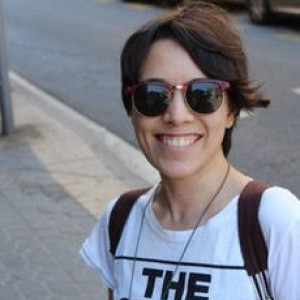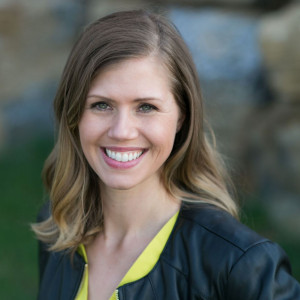What tools do you use to stay productive?
Interview with Emma, a freelance marketing consultant
I probably go a bit overboard here. I have a separate notebook for each client, a master to-do list, a few Trello boards, a couple of LucidChart maps, oh, a whiteboard, a sketch pad, and the notes function on my iPhone.
It sort of depends on the type of work I’m doing too. But I’d say it’s my good old to-do list and pen and paper that keeps me most productive.
The act of writing things down is still the best tool to both help with creativity and make that commitment to do something.
Emma is thriving as a freelance marketing consultant—see her tips on managing client demands & making yourself marketable as a freelancer.
Read full interview from Interview with Emma, a freelance marketing consultant.
Interview with Cecilia, a content writer managing her remote career in Dubai
I use many tools to stay productive!
To name a few, I use the StayFocusd extension for Chrome to block distracting websites and Qbserve for Mac track of how I spend my time on the computer. I'm a big fan of the StayFocusd nuclear option to block all sites except those I've whitelisted.
To keep me from getting distracted on my phone, I use App Detox to block distracting apps and Fabulous to create good productivity habits.
Although sometimes, what works best for me is as simple as turning off my phone and the wifi.
Cecilia got her start translating blog posts, and in 2018 she went fully remote. See her tips for managing an international remote work career.
Read full interview from Interview with Cecilia, a content writer managing her remote career in Dubai.
Interview with John, an international business writer sharing 15 years of insights
My laptop of course is essential. But I also use Microsoft Office Suite, PayPal, online banking and a variety of services related to travel. I also use Skype, Google Docs, earphones, and a smartphone. Whatever supports remote work—I’m always interested in learning more about it.
For over a decade, John has worked as an international business writer. See his insights on the state of remote work, freelancing, and attracting clients who are the right fit.
Read full interview from Interview with John, an international business writer sharing 15 years of insights.
Interview with Pola, a Paris-based content writer
I use Kantree for work management and my monthly content calendar. Buffer and TweetDeck are time savers when it comes to social media.
A job ad in an online group led Pola to find her ideal career as a content writer—see her remote work & job seeking takeaways.
Read full interview from Interview with Pola, a Paris-based content writer.
Interview with Celine, a VP of People Ops and remote team member
I am a strong no-paper activist.
As a result, we have implemented a wide variety of tools (direct communication, video communication, asynchronous communication, documentation, absence management, recruitment management ...).
Being available, staying in touch, and sharing ideas and experiences is key when you work remotely.
Celine has experienced the highs and lows of working with remote and hybrid teams—see her tips for thriving as a member of a remote team.
Read full interview from Interview with Celine, a VP of People Ops and remote team member.
Interview with Sarah Archer, a content marketing manager & remote work techie
To me, routine is everything. Exercising and eating balanced meals is essential to staying productive.
Understanding what I need to accomplish in small chunks helps me stay productive.
I also use various online tools to keep me productive including: Slack, Zoom, Gmail, Basecamp and BuzzStream.
From noise-canceling headphones to Basecamp—content marketer Sarah shares her must-have remote work tools & essential productivity tips.
Read full interview from Interview with Sarah Archer, a content marketing manager & remote work techie.
Interview with Tammy, founder and CEO of Workplaceless
Google Drive, Slack, Asana, Evernote, and a standing desk.
Learn how this founder and CEO of a remote work resource and certification program handles the triumphs and trails of location independence.
Read full interview from Interview with Tammy, founder and CEO of Workplaceless.
Interview with Tara, a remote director of research and administration
We use Deskflow, a product of Workflow International. It helps us organize our projects, including everything from scheduling, contact management, and invoicing. It’s fabulous. We also make good use of LinkedIn.
A move to be closer to a spouse's job led Tara to remote work—see her tips for staying productive and organized as a full-time remote director.
Read full interview from Interview with Tara, a remote director of research and administration.
Interview with Audrey, a military wife thriving as a marketing manager
Right now, I'm really digging Todoist to keep all my tasks and deadlines organized. I'm also a huge fan of CoSchedule, a marketer's dream calendar.
Since our entire team at Boldly is remote, using Slack and the Google suite helps keep life easy. Honestly, I'd be lost without those two tools.
But the glory of remote work, in my opinion, is that you don't have to use online tools to keep you productive.
Sometimes the answer to productivity is the old-fashioned one: Get out and take a walk outside when you're feeling tired or distracted and reset.
No human can sit at a desk for eight straight hours completely focused and highly-productive. The more companies can accept and embrace this truth, the happier and more productive their teams will become.
Marrying an active-duty army officer sent Audrey on the search for a remote work position—see how she has established her career while staying on the move.
Read full interview from Interview with Audrey, a military wife thriving as a marketing manager .
Interview with Lauren, a content marketing team lead and hybrid remote worker
Slack and Asana. Slack keeps me connected to my team during my WFH days and keeps me accountable to the rest of my coworkers. It bridges that feeling of disconnection when you’re away from the office. Asana is our project management tool and that keeps me focused on the actual work that needs to be done. Between those two things, it’s pretty easy to keep on track.
For Lauren, remote work was a non-negotiable arrangement—see how she manages a hybrid remote work situation and her tips for those on the remote job search.
Read full interview from Interview with Lauren, a content marketing team lead and hybrid remote worker.









